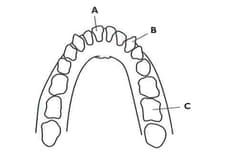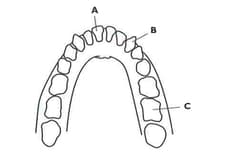Mary Jones and Geoff Jones Solutions for Chapter: Animal Nutrition, Exercise 5: End-of-chapter questions
Mary Jones Biology Solutions for Exercise - Mary Jones and Geoff Jones Solutions for Chapter: Animal Nutrition, Exercise 5: End-of-chapter questions
Attempt the practice questions on Chapter 7: Animal Nutrition, Exercise 5: End-of-chapter questions with hints and solutions to strengthen your understanding. Cambridge IGCSE® Biology Coursebook Third Edition solutions are prepared by Experienced Embibe Experts.
Questions from Mary Jones and Geoff Jones Solutions for Chapter: Animal Nutrition, Exercise 5: End-of-chapter questions with Hints & Solutions
Copy and complete these sentences about digestion, using words from the list. You may use each word once, more than once or not at all.
acids, amino, amylase, carbohydrates, duodenum, fatty, fats, gall, glycerol, hydrochloric, ileum, ingestion, large, mucus, esophagus, pancreas, proteins, small, starch, trachea, urinary.
- The teeth, lips and tongue help to take food into the mouth. This is called _____. The food is mixed with saliva from the salivary glands. Saliva contains the enzyme _____, which digests _____, to the sugar, maltose. Saliva also contains _____, which lubricates the chewed food making it easy to swallow.
- The food travels down the _____ to the stomach. Here, _____ acid is secreted, which provides ideal conditions for the enzyme pepsin to work. Pepsin is a protease, and begins the digestion of_____.
- After leaving the stomach, the food enters the_____, which is the first part of the_____ intestine. Here, juices from the_____ and_____ bladder flow in. They contain amylase, protease and lipase. Lipase digests fats to_____ _____ and _____.
Calcium, iron, vitamin C, and vitamin D are nutrients required in small amounts in the diet.
- Explain why none of these nutrients need to be digested before they are absorbed.
Calcium, iron, vitamin C, and vitamin D are nutrients required in small amounts in the diet.
- Name two foods that contain calcium.
Calcium, iron, vitamin C, and vitamin D are nutrients required in small amounts in the diet.
- Describe and explain the deficiency symptoms of a lack of iron in the diet.
Calcium, iron, vitamin C, and vitamin D are nutrients required in small amounts in the diet.
- Describe the role of vitamin D in the body.
The diagram shows the teeth in the upper jaw of the human.
Name the teeth labeled A, B, and C.
The diagram shows the teeth in the upper jaw of the human.
Draw and label a diagram to show the internal structure of the tooth labeled C.
The diagram shows the teeth in the upper jaw of the human.
Outline the functions of tooth A and tooth C.



